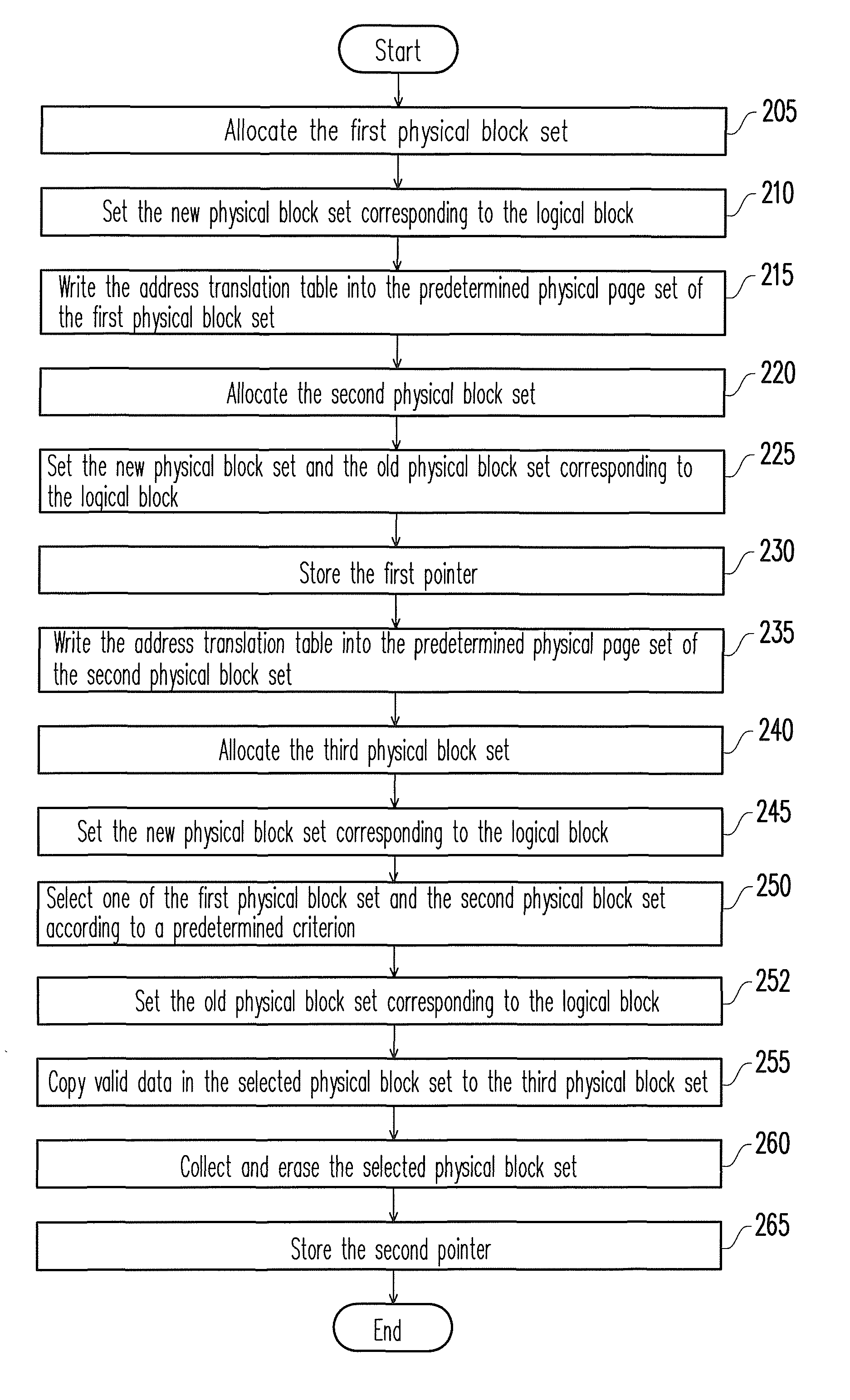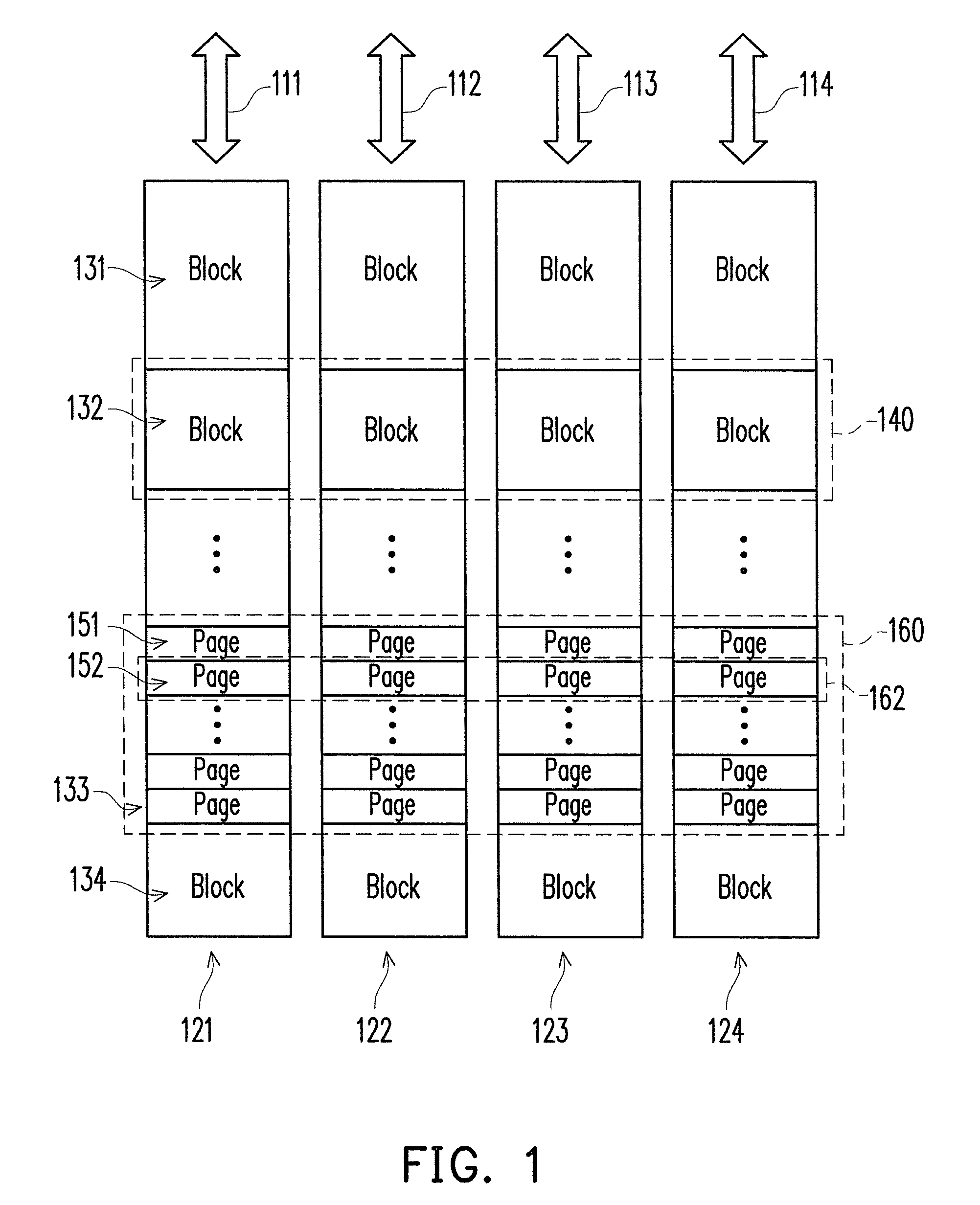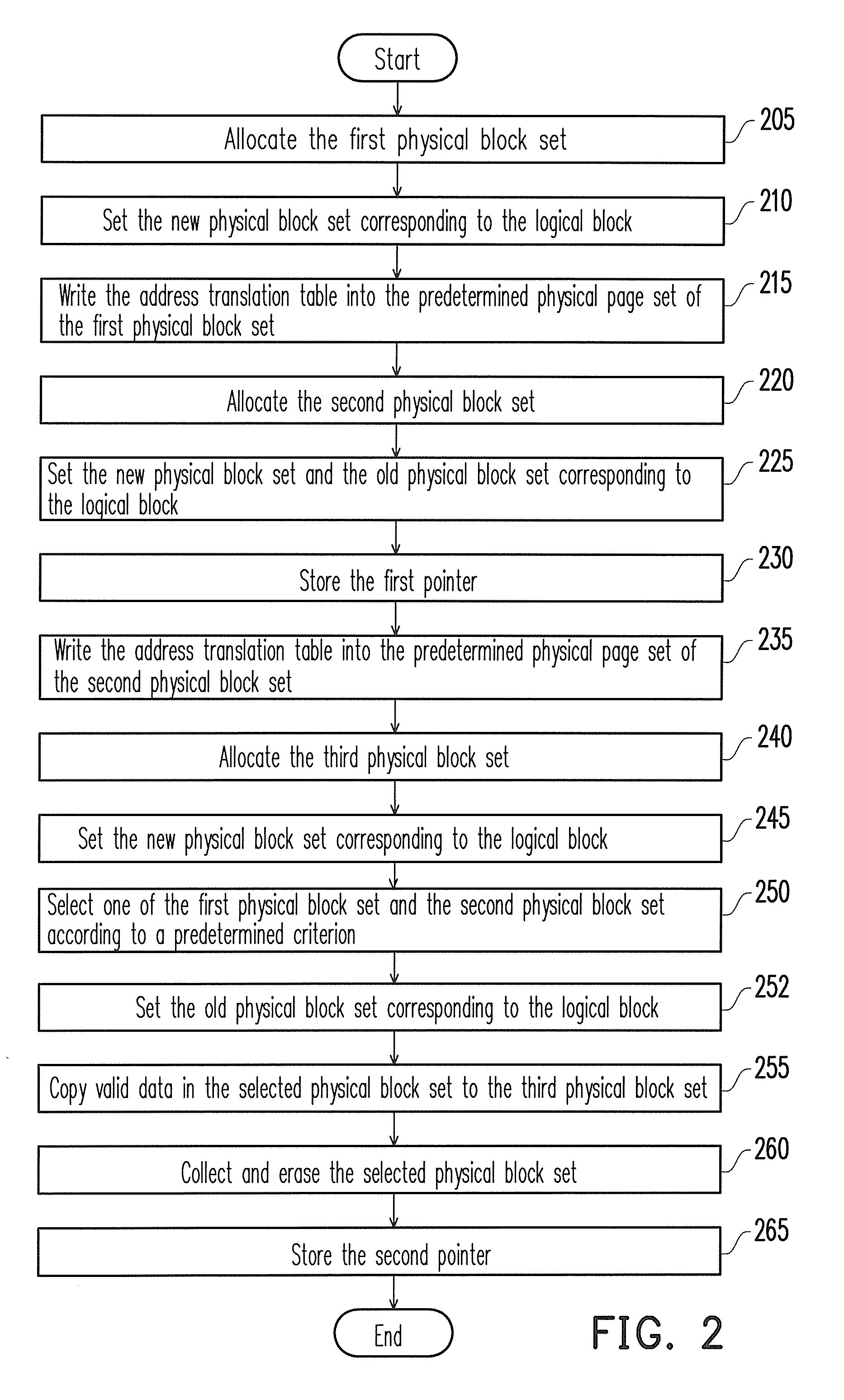Block management method of a non-volatile memory
a management method and non-volatile memory technology, applied in the direction of memory adressing/allocation/relocation, instruments, error detection/correction, etc., can solve the problems of data loss, low-cost mlc flash memory performance decline, and conventional management mechanisms are either ineffective in managing low-cost mlc flash memory or very inefficient in doing so. , to achieve the effect of improving the garbage collection performance of a non-volatile memory storage system,
- Summary
- Abstract
- Description
- Claims
- Application Information
AI Technical Summary
Benefits of technology
Problems solved by technology
Method used
Image
Examples
Embodiment Construction
[0028]Reference will now be made in detail to the present preferred embodiments of the invention, examples of which are illustrated in the accompanying drawings. Wherever possible, the same reference numbers are used in the drawings and the description to refer to the same or like parts.
[0029]FIG. 1 is a diagram of a non-volatile memory storage system according to an embodiment of the present invention. Referring to FIG. 1, the non-volatile memory storage system includes hardware channels 111-114 and non-volatile memory chips 121-124. The hardware channels 111-114 are buses configured to transmit memory data and control signals. In the present embodiment, the non-volatile memory chips 121-124 are multi-level cell (MLC) flash memory chips. However, the present invention is not limited thereto, and in other embodiments of the present invention, the non-volatile memory chips 121-124 may also be other types of non-volatile memory chips. Each of the hardware channels 111-114 is coupled t...
PUM
 Login to View More
Login to View More Abstract
Description
Claims
Application Information
 Login to View More
Login to View More - R&D
- Intellectual Property
- Life Sciences
- Materials
- Tech Scout
- Unparalleled Data Quality
- Higher Quality Content
- 60% Fewer Hallucinations
Browse by: Latest US Patents, China's latest patents, Technical Efficacy Thesaurus, Application Domain, Technology Topic, Popular Technical Reports.
© 2025 PatSnap. All rights reserved.Legal|Privacy policy|Modern Slavery Act Transparency Statement|Sitemap|About US| Contact US: help@patsnap.com



